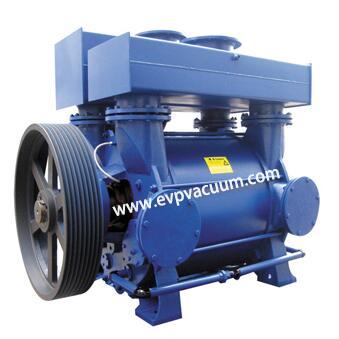vacuum pump selection guide
There are many types of vacuum pump, facing complex working conditions and application fields, so there are many factors involved in the selection of vacuum pump. The following EVP vacuum pump manufacturers summarize several ways to correctly select vacuum pump.
First, confirm the environmental conditions when selecting vacuum pump?
Including the requirements of atmospheric pressure, ambient temperature, air corrosivity, relative humidity, dangerous area level, dust prevention and waterproof.
Second, to select a vacuum pump to confirm the nature of the medium?
It includes the name, temperature, saturated steam pressure, density, viscosity, solid particle diameter and content, gas content, flammability, toxicity, corrosiveness and volatility of the medium to be pumped.
Third, confirm the operating conditions when selecting vacuum pump?
This refers to the absolute liquid level pressure at the suction side, the liquid level pressure at the discharge side, intermittent or continuous operation, fixed or movable position, and the convenience of installation and maintenance.
Fourth, what is the material of the over-current part of the vacuum pump?
1. The corrosiveness of the medium to be pumped,
The anti-corrosion performance of the pump overflow parts can meet the use requirements, and the high anti-corrosion performance cannot be pursued, otherwise, the purchase cost of the pump will be greatly increased.
2. Whether the medium to be pumped contains solid particles,
Because the hardness and content of solid particles are directly related to the durability of pump overflow parts.
3. Temperature (pressure) of the medium to be pumped,
The higher the temperature (pressure) of the medium is, the higher the material strength of the pump’s overflow parts should be. Generally, when the temperature is more than 250 ℃, steel castings or steel pieces shall be selected.
4. Medium with requirements of hygiene level or no pollution,
Select the appropriate overcurrent assembly material. In addition, the pump structure should be easy to clean.

Fifth, how to select the performance parameters of vacuum pump?
1. Calculation method
(1) . flow: it is directly related to the production capacity and conveying capacity of the whole plant. For example, the normal, minimum and maximum flow of the pump can be calculated in the process design. When selecting the vacuum pump, the maximum flow shall be taken as the basis and the normal flow shall be considered. In the absence of the maximum flow, 1.1 times of the normal flow shall be taken as the maximum flow.
(2) . head: generally, the head after enlarging 5% – 10% margin shall be selected. Special attention: the flow of centrifugal pump, especially the head margin should not be too large, otherwise, cavitation may occur when the pump is working, resulting in the flow and head can not meet the requirements. Once this happens, generally, remedial measures can be taken to cut the outer diameter of impeller or turn down the outlet valve of pump.
(3) Power: generally, the power form and size of the pump belt shall be selected by the manufacturer and marked in the product sample.
(4) . NPSH
Check whether the NPSH and required NPSH of the pump are matched. When it can’t be satisfied, effective measures should be taken to achieve it.
2. Analogy and test
When the resistance value of the pump pipeline system can not be calculated accurately, the performance parameters such as flow and head of the required pump can be determined by analogy method or test method.
Sixth, select the installation type of vacuum pump?
According to the pipeline layout and installation site, horizontal, direct, vertical and other types (angle type, double type, detachable type, right angle type and variable angle type) shall be selected.
Seventh, determine the number of vacuum pumps and standby rate?
Generally, only one pump is used for normal operation, because a large pump is equivalent to two small pumps working in parallel (i.e. the same head and flow), and the efficiency of the large pump is higher than that of the small pump, so from the perspective of energy conservation, it is better to choose a large pump instead of two small pumps. However, in case of the following situations, parallel cooperation of two pumps can be considered:
(1) The flow is very large. One pump can’t reach this flow.
(2) For the pump that needs 50% spare rate, it can be configured as three sets, one for dual use and one for standby.
(3) For some large pumps, the pumps with 70% flow requirements can be selected for parallel operation without standby pump. When one pump is under maintenance, the other pump still bears 70% of the production delivery capacity.
(4) For the pumps that must be operated continuously for 24 hours, one shall be operated, one for standby and one for maintenance, totaling three. If necessary, it can be selected with the assistance of the pump supplier.
These are the selection steps of vacuum pump. Have you learned?
(The article comes from the Internet. If reprinting is not allowed, please contact our company to delete it.)
